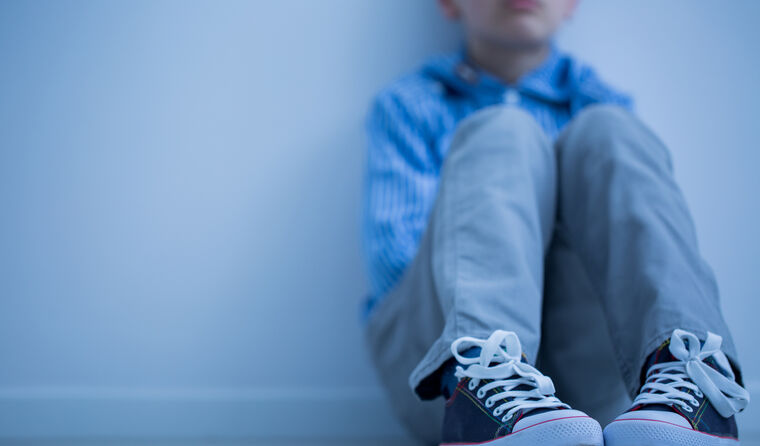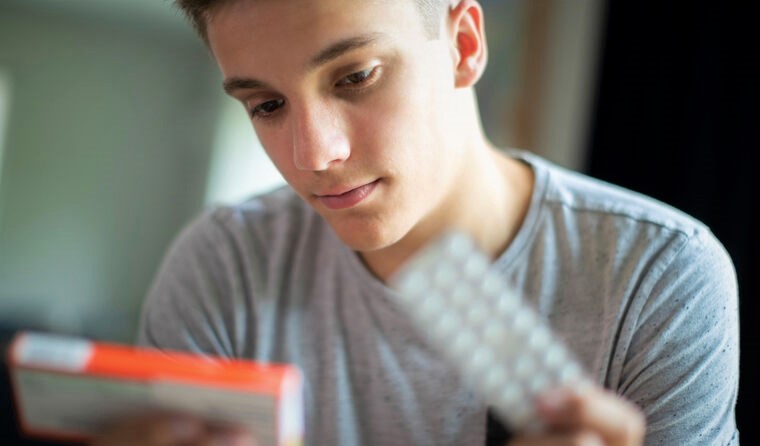Analysis
Disturbing trend shows change in children’s mental health
The increasing number of children being prescribed antidepressants is a sign of rising distress, says Dr Andrew Leech.
 The COVID-19 pandemic has coincided with a reasonably sudden escalation in the use of antidepressant medication in children and adolescents.
The COVID-19 pandemic has coincided with a reasonably sudden escalation in the use of antidepressant medication in children and adolescents.
UPDATED
There is no doubt that what GPs are currently seeing is unprecedented and a significant shift from what we have ever imagined.
Distressed teenagers who are on the verge of ending their lives. Children as young as eight who are self-harming, running away from home and refusing to go to school due to significant anxiety. Kindergarten children being expelled due to violence in the classroom.
Kids who can’t sleep, can’t eat, or can’t function day to day.
These are real life cases that I have seen in recent times, and I have no doubt this is a shift from where we were a decade ago.
Childhood anxiety disorders and mood disorders are on the rise and more recently, the COVID-19 pandemic has coincided with a reasonably sudden escalation in the use of antidepressant medication in young people, notably in children and adolescents.
The most pronounced change increase was among adolescent females, with Pharmaceutical Benefits Scheme (PBS) data showing a 15.6% increase in prescriptions between March 2020 and February 2021.
To put it another way, an additional 5000 adolescent girls were prescribed antidepressants during this 12-month period for the very first time.
The reasons are likely to be vast and varied.
One question we are still trying to understand is whether the COVID-19 pandemic was the cause of such significant psychological distress, or did it simply highlight children and adolescents who were already struggling, especially those who were stuck home schooling for months on end?
I believe it is unlikely to just be COVID.
According to the Australian Institute of Health and Welfare (AIHW), in 2014 almost 14% of children aged between 4–11 experienced a mental disorder, with ADHD followed by anxiety disorders the most common.
More recent data from the US Centers for Disease Control and Prevention show that in 2019 one in five (20.9%) adolescents aged 12–17 had previously experienced a major depressive disorder and one in three (36.7%) reported feeling sad or hopeless.
I have had countless conversations with parents and grandparents, as well as teachers, paediatricians and other specialists, and the question they all ask is ‘Why is this happening?’
It is a difficult question to answer, but one contributing factor could be screen time.
Children today spend at least 3–4 hours per day on a screen and I have also noticed the emergence of violent video games among young children, and increasing social media use among teenagers until late at night.
We are yet to fully understand what this can do to a child’s brain development and emotional wellbeing.
Furthermore, children today seem to be permitted less opportunity to take risks and learn from their mistakes. They are instantly gratified by not just tech, but rewards and incentives for anything and everything, which makes them less resilient when more serious challenges come along.

Pharmaceutical Benefits Scheme data showed a sharp increase in antidepressant prescriptions among adolescents between March 2020 and February 2021.
So, while there is unlikely to be any one reason for the increase in antidepressants among children and adolescents, it is clear they are experiencing more distress and mental health-related problems than ever before. COVID-19, technology, social media, parental stress and higher pressure with less resilience are some of the factors causing this.
What can GPs do?
These are some of my most stressful consultations.
GPs need to support these families, but also require the skills to manage the higher severity cases, potentially with medication, after weighing up the risks and benefits.
But we also face time constraints and limited training in this area, which makes it even harder to handle when a child, teen or family come through our doors in crisis.
There is no perfect way to navigate these scenarios, but we can certainly help.
One option is serotonin reuptake inhibitors (SSRIs), which have been part of our treatment toolkit for as long as we have been treating mental health.
They are indicated for people aged 18 and over, as this is where there is evidence for safety and efficacy, but it also does not completely rule out their use in children.
However, I deliberately referred to the GP ‘toolkit’, as antidepressants should never be used in isolation when managing serious mental health disorders, let along in children.
Moreover, mild-to-moderate depression or anxiety disorders can often be effectively treated with good psychology, including psychotherapy, family therapy and cognitive behavioural therapy (CBT).
GPs are also well-equipped to discuss the importance of sleep hygiene, adequate nutrition, good routine, exercise and outdoor activity, mindfulness and finding a hobby or sport to provide distraction and purpose. All of these are useful adjuncts.
For managing severe anxiety and depression in children, antidepressants can be effective, but they must be utilised with caution and careful balancing of the risks versus benefits.
Based on clinical trials, the number ‘needed to treat’ with SSRIs ranges from 4–10 for treating depression and about six for treating OCD for clinical benefit. The number needed to harm sits at around 50 for a suicide-related event, and between 4–10 for any short- or long-term side effect.
GPs should have a realistic discussion with parents and caregivers about their intended use, weighing up the risk versus benefit and in particular the risk of suicidal thoughts; though it should be noted that in clinical trials the risk of suicidal thoughts was low and no child took their own life, this risk has been well documented in the US, where a black box warning currently exists.
We should also be comfortable with assessing a child for mental health concerns and be able to grade the degree of distress, correlate a diagnosis under the DSM V and have availability to follow up children after the prescription commences. Some psychiatrists that I know even take written consent, documenting the parent’s agreement and awareness of risks.
The Australian Adverse Drugs Committee (ADRAC) has reviewed the safety and efficacy of SSRIs in the treatment of psychiatric disorders in children and adolescents, including data from the US Food and Drug Administration, and recommend that:
- any use of SSRIs in children and adolescents should be undertaken within the context of comprehensive management of the patient, including careful monitoring of the emergence of suicidal ideation and behaviour
- the choice of medication should take into account the Product Information and purpose of use
- if children are being treated with an SSRI, their medication should not be stopped abruptly.
Despite the risks, I feel it is important to note that SSRIs do have some evidence of use and benefit in children.
Perhaps the most compelling is
research from 2008 published in JAMA.
‘In adolescents with moderate-to-severe depression, treatment with fluoxetine alone or in combination with CBT accelerates the response,’ the authors wrote.
‘Adding CBT to medication enhances the safety of medication. Taking benefits and harms into account, combined treatment appears superior to either monotherapy as a treatment for major depression in adolescents.’
From my experience, antidepressants can lead to an incredible turnaround of what could have been a catastrophic situation.
An eight-year-old boy I saw recently was at breaking point; he was running away from school, threatening his siblings and parents with knives, and struggling to cope with going to bed due to extreme anxiety.
We were under time pressure to sort out his difficult situation, but while I sent a referral to several paediatric psychiatrists around Perth, none were accepted (not an uncommon issue at present).
So, we established a management that plan included CBT under a mental health care plan with a child psychologist and the initiation of fluoxetine at a low dose. He is now happy to be attending school, has low to no risk behaviours, and appears more engaged and happier with his family and peers.
Thankfully, there were no initial or ongoing side effects.
This is not to say medication is the sole factor, but the chemical drive of serotonin and noradrenaline must be important in situations such as this.
This article was edited at 3.30 pm on Saturday 16 April to update the reference to DSM IV to the most recent DSM V.
Log in below to join the conversation.
antidepressants COVID-19 young people
newsGP weekly poll
Would it affect your prescribing if proven obesity management medications were added to the PBS?